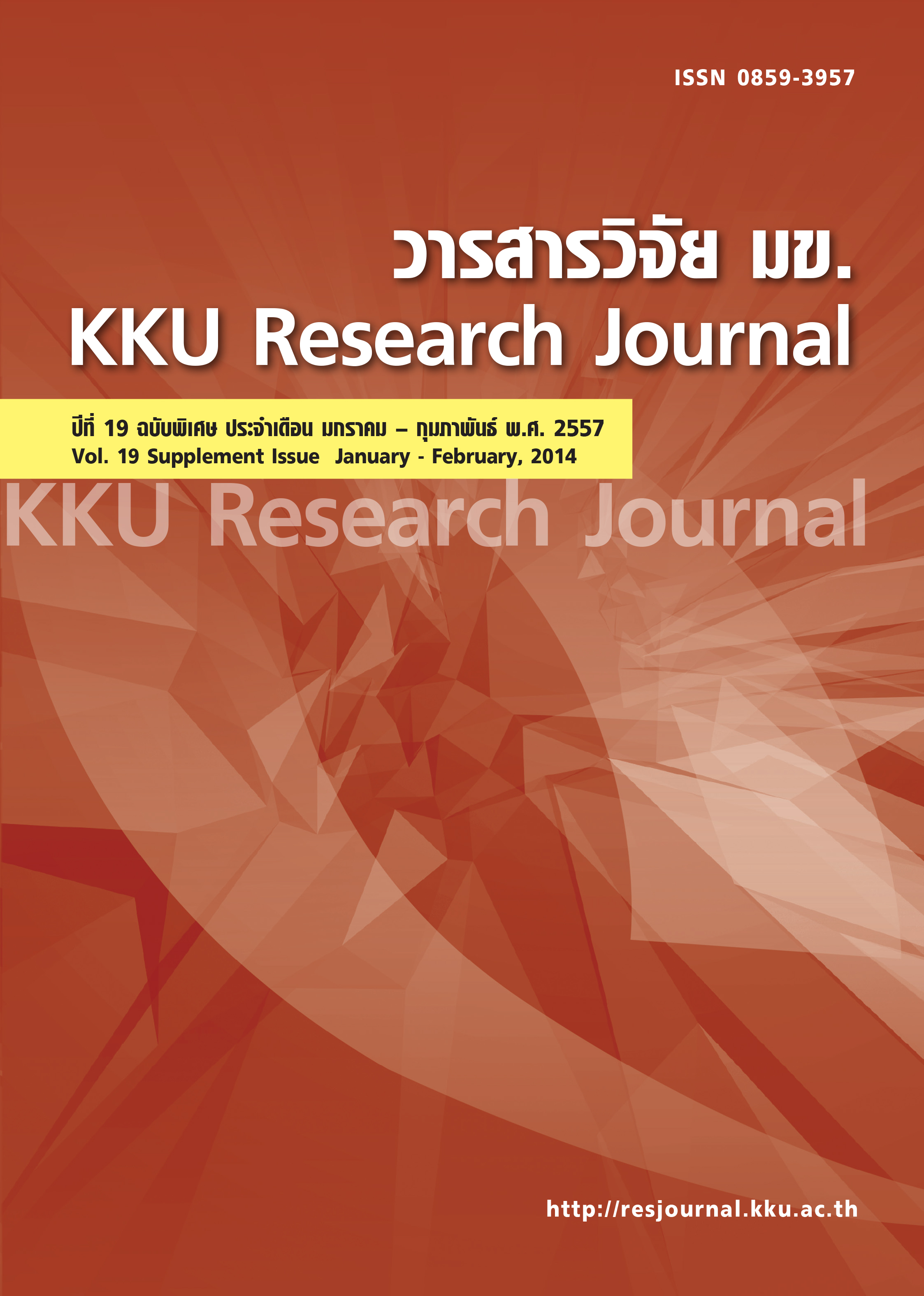Changes in lactic acid bacteria diversity during fermentation of sour pickled mustard green
Main Article Content
Abstract
Mustard green (Brassica juncea L var. rugosa) is popularly consumed in Thailand as salted or sour pickled vegetable. Naturally occurred lactic acid bacteria (LAB) from the raw ingredients play an important role in fermentation of sour pickled mustard green. Unsuccessful sour taste development is one of the major problems in the sour pickle industry. Therefore this study aims to study the LAB diversity and their changes during fermentation of the sour pickled mustard green, both in natural fermentation and in starter culture-added fermentation. This knowledge will help understanding and developing starter culture for successful fermentation. The experiment was conducted at the pickled mustard green factory with industrial-scale fermentation facility. A control batch without starter culture and two batches of starter culture-added at two different concentrations were fermented at room temperature for 12 days. LAB were isolated on de Man, Rogosa and Sharpe (MRS) agar supplemented with 0.5% CaCO 3 at day 0, 3, 7, and 12 of fermentation. Ten bacterial colonies were randomly selected from each time point and genomic fingerprint of each isolate was generated using repetitive element-based PCR (rep-PCR) technique. The control batch without starter culture showed sign of spoilage indicated by increase in pH from 3.33 to 4.44 at day 7 while in the starter culture-added batches the pH remained low throughout the fermentation period. Analysis of the bacterial diversity revealed succession of the LAB species from Weissella spp. to Lactobacillus plantarum in naturally fermented batch and from Weissella spp. to Lactobacillus fermentum in starter culture-added batches.
Article Details
References
[2] Gevers D, Huys G, Swings J. Applicability of repPCR fingerprinting for identification of Lactobacillus species. FEMS Microbiol Lett. 2001;205(1):31-6.
[3] Kim B, Seo WT, Kim MG, Yun HD, Cho KM. Metagenomic lactic acid bacterial diversity during Mulkimchi fermentation based on 16S rRNA sequence. J Korean Soc Appl Bi. 2012;55(6): 787-92.
[4] Chao SH, Tomii Y, Watanabe K, Tsai YC. Diversity of lactic acid bacteria in fermented brines used to make stinky tofu. Int J Food Microbiol. 2008;123(1-2):134-41.
[5] Plengvidhya V, Breidt F, Jr., Lu Z, Fleming HP. DNA fingerprinting of lactic acid bacteria in sauerkraut fermentations. Appl Environ Microb. 2007;73(23):7697-702.
[6] Miyashita M, Yukphan P, Chaipitakchonlatarn W, Malimas T, Sugimoto M, Yoshino M, et al. 16S rRNA gene sequence analysis of lactic acid bacteria isolated from fermented foods in Thailand. Microbiol Cult Coll. 2012;28 (1):1-9.
[7] Nguyen DT, Van Hoorde K, Cnockaert M, De Brandt E, Aerts M, Binh Thanh L, et al. A description of the lactic acid bacteria microbiota associated with the production of traditional fermented vegetables in Vietnam. Int J Food Microbiol. 2013;163(1):19-27.


